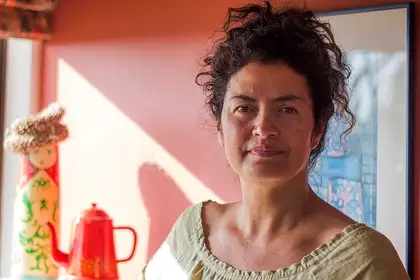
"It is imperative that we have a cancer control strategy which addresses Māori cancer priorities,” says Dr Lis Ellison-Loschmann, from the Centre for Public Health Research.
Ahead of World Cancer Day this Saturday, a Massey University public health researcher is calling for government policy focus and action to address the expanding cancer crisis among Māori.
Cancer incidence and mortality rates are already significantly higher in Māori compared to non-Māori, while inequalities in cancer survival rates have been documented for several cancers including lung, liver, stomach, breast and cervical cancers. Even for cancers less common in Māori, such as colorectal and prostate cancers, Māori are still more likely to die than other populations.
“Given the lag time between exposure to risk factors and the development of cancer, unfortunately we can expect to see even higher rates of some of these cancers in the coming years which will further increase the cancer burden for whānau,” says Dr Lis Ellison-Loschmann, of Ngāti Toa Rangatira, Te Atiawa, Ngai Tahu and Ngāti Raukawa. “So it is imperative that we have a cancer control strategy which addresses Māori cancer priorities.”
The inclusion of health in all policies is critical for Māori cancer control, Dr Ellison-Loschmann says. “Addressing persistent ethnic inequalities in education, income, the labour market, housing, and wealth is challenging but necessary if equity in cancer incidence and outcomes are to be achieved among future generations.”
The higher prevalence of crowded living conditions and socioeconomic deprivation for Māori families increases the risk of exposure to infections such as helicobacter pylori (H pylori), a key risk factor for stomach cancer.
“We should not forget the power of prevention and additionally the role of screening as an important public health tool,” she says. “For example, expanding measures to screen and treat those infected with H pylori and using eradication therapy for infected persons without symptoms are critical population-level strategies that could reduce stomach cancer incidence in Māori.”
National programmes are showing some success in improved screening rates in Māori populations, but equitable coverage with non-Māori for breast and cervical screening is yet to be achieved, she says. “A Māori cancer control strategy would go some way towards ensuring that current screening gains are at least maintained.
“However, a greater focus on improving survival is critical as evidenced by Māori death rates which are more than one and a half times higher than those of non-Māori. Access to screening is a key issue but access also plays a huge role at all stages of the cancer continuum. With lung cancer, for example, despite the higher risk being well-known, Māori tend to experience longer delays between diagnosis and treatment and are less likely to be referred for curative treatment than non-Māori. This is totally unacceptable. We need policy that explicitly addresses these inequalities if we are to make a difference in cancer outcomes for Māori. Timely access to optimum care improves survival and must be a core priority of any Māori cancer control strategy,” Dr Ellison-Loschmann says.
According to the 2013 cancer registrations data from the Ministry of Health:
- Māori had a registration rate of 418.9 per 100,000 Māori population, or 27.6 per cent higher than the rate for non-Māori (382.2 per 100,000 non-Māori population).
- Between 2004 and 2013 the registration rate for Māori females was significantly higher than the rate for non-Māori females each year. Māori and non-Māori rates for males became closer in the middle of the past decade, but these have diverged more recently.
- Māori had a cancer mortality rate of 197.9 per 1000,000 Māori population, or 1.7 times the rate for non-Māori (116.0 per 100,000 non-Māori population).
- Between 2004 and 2013 the mortality rate for Māori males and females was consistently significantly higher than the rate for non-Māori males and females.